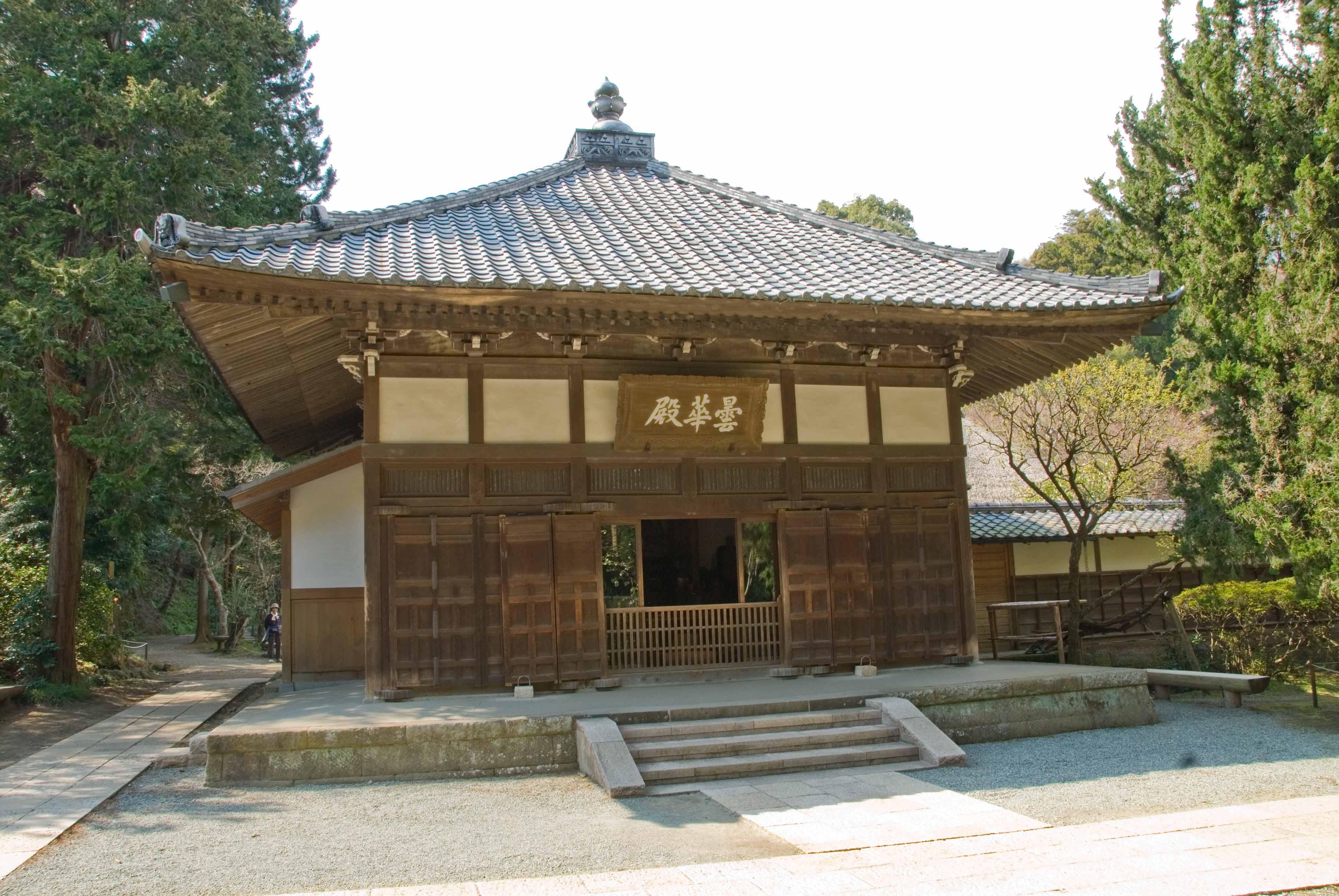- Jōchi-ji
Infobox Buddhist temple
name = Kinpōzan Jōchi-ji

img_size =
img_capt = Jōchi-ji - The Main Hall
landscape = Yes
denomination = Rinzai, Engaku-ji branch
founded = 1281 - 1283
closed =
founder = Hōjō Munemasa, Hōjō Morotoki
teacher =
director =
roshi =
abbot =
priest =
rinpoche =
reverend =
address = 1402 Yamanouchi, Kamakura, Kanagawa 247-0062
country = flagicon|Japan
phone = 0467-22-3943
website = NoneThe nihongo|Kinpōzan Jōchi-ji|金宝山浄智寺 is aBuddhist Zen temple inKita-Kamakura ,Kanagawa Prefecture , [Japan] . It belongs to theEngaku-ji school of theRinzai sect and is ranked fourth among Kamakura'sFive Mountains . The main objects of worship are the three statues of Shaka, Miroku and Amida Nyorai visible inside the main hall.History
Officially, the temple was founded in 1283 by Hōjō Munemasa (1253–1281) (son of the fifteenth
Shikken Hōjō Tokiyori ) and his son Hōjō Morotoki (1275–1311). However, because the temple opened the year Munemasa died at just 29 and because of Morotoki's age at the time, it's likely that his wife and Munemasa's younger brotherHōjō Tokimune (1251–1284) had a hand in directing its building and its opening.Priest Nanshu Kōkai (a.k.a. Shin’o Zenji) was invited to open the temple but, feeling too young and not up to the task, he asked the Hōjōs to nominate also Gottan Funei and Daikyu Shonen, both Chinese Zen masters that had come to Japan invited by Hōjō Tokiyori. The temple has therefore the distinction of having three official founding priests.
Points of Interest
In her 1918 guide to Kamakura "Kamakura: Fact and Legend",
Iso Mutsu had little to say about Jōchi-ji, other than it was in complete decay. She dedicated to it just a half page. In fact, all you see today is new.At its peak, the temple was far bigger than now; it comprised 11 buildings and 500 people lived in it, but little is left of the original great temple that was one of Kamakura's Five Mountains. All existing buildings were rebuilt after being lost during the
Great Kanto Earthquake .At the entrance there are a pond, a stone bridge and a gate. To the left there's also the nihongo|Well of Sweet Dew|(甘露ノ井|Kanro no I), one of the once-famous nihongo|Ten Kamakura Wells|(鎌倉十井|Kamakura Jussei). Above the gate stand the four characters nihongo|寶所在近|Hōsho Zaikin, or "The treasure you are looking for is next to you".
After a flight of stone stairs one finds a very unusual feature: the Shōrōmon (鐘楼門), that is a two-storied combination of gate and belltower restored in 2007. The second story hosts a bell made in the year 1340.
In the main hall nearby are three images of Buddha (the already-mentioned Amida, Shaka, and Miroku), the main object of worship, which guard respectively the past, the present and the future.
Behind the main hall are the graveyard, some bamboo groves, numerous cave graves ( the so-called "yagura"), and the statue of
Hotei , the god of good fortune or happiness. After having been touched by generations of Japanese wishing to improve their luck, his belly, his left earlobe and his index finger have been worn smooth.The street that runs to the left of the front gate takes to the house behind the temple where movie director
Yasujiro Ozu used to live in the '50. It's also the starting point of a hiking course that in about 30 minutes will take you to theZeniarai Benten Shrine .Getting there:The temple is very near Kita-Kamakura Station.
References
* [http://www.asahi-net.or.jp/~QM9T-KNDU/jochiji.htm A Guide to Kamakura] accessed on March 28, 2008
* [http://www.kcn-net.org/e_kama_history/kitakamakura/kitakamakura_1.htm Kamakura Citizens Net, "Kita-kamakura"] accessed on March 28, 2008
Wikimedia Foundation. 2010.
